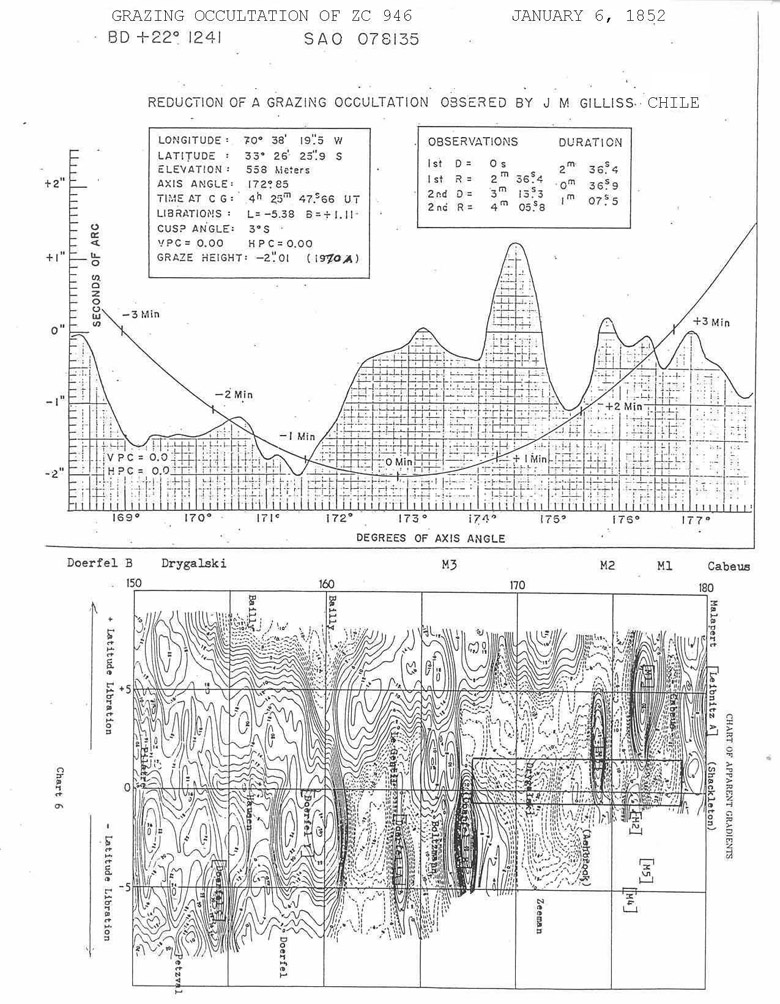July 10, 2013
Resurrecting a Historic Observation

Image provided by Richard Wilds. Curved line on top chart show passage of grazing star Eta Geminorum as accidently observed by J.M. Gilliss in 1852. Bottom chart is topo map of limb regions from Watts (1963). The rectagle on the lower map shows the area of the top chart. Reconstruction and interpretation of observation by Ronald Abileah
The historical discussion of the marginal zone of the Moon includes the case of J. M. Gilliss quietly making scientific history on the clear summer night of 6 January 1852 (The earliest observed grazing occultation on record is from Paris France in 1706). Gilliss was timing total occultations from his observing site near Santiago, Chile. Total occultation timings were used around the world at this time to establish an observer's location on the Earth. As he timed totals he noticed the star Eta Geminorum approaching the southern limb of the moon at an unusual angle. He saw the star disappear. He states that over 2.5 minutes passed before the star reappeared. However, to his surprise the star disappeared again in 36.9 seconds and did not reappear again for over a minute. This was one of the earliest recorded observation of a grazing occultation. About 120 years would pass before Ronald Abileah would discover Gilliss' report and use the computing power of the U. S. Naval Observatory's IBM mainframe computer to reduce the observation. The Watts Charts were used to show that Gilliss had observed the star over the crater Drygalski. The first disappearance was behind the lunar mountain M3. Then the star reappeared in a narrow valley only to be occulted again by the high ground that included the lunar mountains M1 and M2. The star reappeared as the moon continued in its orbit.
Richard Wilds
Related Links
21st Century Atlas chart L4.
Yesterday's LPOD: Awesome in Blue
Tomorrow's LPOD: Bright Ejecta Flow
COMMENTS?
Register, Log in, and join in the comments.



